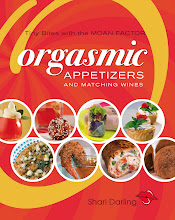
My dad had a triple by-pass a few years ago. Knowing red wine in moderation possesses antioxidants that are good for one’s health, he drinks the occasional glass of red with his meals. Since he’s not an aficionado, he purchases products that tend to be inexpensive and awfully sweet.
A few months ago a wine loving friend recommended I try an inexpensive red called Finca Flichman Misterio malbec, (CSPC # 28803), $7.95. I tried the wine. For the price this is a decent quaffer, offering medium weight with fruity flavours like dark, ripe plums and a hint of toast on the back notes of the nose and palate. I purchased a bottle for my dad and he really enjoyed it.
Misterio is made from the malbec grape. It is one of six grape varieties used in the production of France’s famous red blend called Bordeaux. The grape requires lots of heat and sun, and so has really taken root in Argentina. It is now the national grape of this country with its largest plantings in Mendoza. Here the wines made from this variety are inky red with deep dark fruit flavours and velvety texture.
With 13.5 percent alcohol, this wine has enough viscosity (weight and fattiness) to work with red meat. I decided to try this wine with a type of red meat that is good for the heart, as well…bison!
I sipped a glass of Misterio with a bowl of chili made that I made with ground bison purchased at the Peterborough Buffalo Farm booth at the Saturday Peterborough Farmer’s market. The local farm and booth are owned and operated by Tim Belch.
Bison is low in fat, thus leaner than other red meats. However, it has a taste and texture very similar to beef. I added ground bison to my classic chili recipe. I also incorporated some unsweetened dark chocolate powder and finely ground coffee. Dark chocolate and coffee have pleasant bitterness that adds wonderful depth and roundness of flavour on the finish of the chili, harmonizing with the subtle tannin in Misterio.
Bison can be incorporated into a variety of heart-smart dishes that will complement Misterio. Tim Belch also offers a range of bison cuts at the farmer’s market. You can substitute bison for any dish that normally features beef. Examples are coffee marinated bison short ribs, bison burgers with extra old cheddar, bison pot pie, sheppard’s pie, bison and barley soup, meat sauce for spaghetti, etc. Try using bison in a traditional recipe for beef bourgignon. I’m sure Julia Child would have ventured to try bison bourgignon. Keep in mind that bison, because it has low fat, cooks in half the time as beef.
Misterio malbec tends to be slightly bitter on the finish when the bottle is first opened. After all, it is an inexpensive quaffer. I recommend you decant the wine for an hour or so before sipping.





